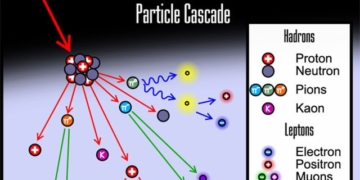The Fugaku supercomputer, boasting a performance of 31.1 petaflops, was developed by Fujitsu and the RIKEN research institute in Japan. It can be employed to forecast and analyze natural phenomena such as rain cloud formations and storms.

Supercomputer aids in forecasting rain cloud formations. (Image: Fujitsu)
Fujitsu Technology Company has introduced its supercomputer system to the Japan Meteorological Agency (JMA), which will be used for forecasting rain cloud formations, according to Interesting Engineering. Rain cloud formations are slow-moving or stationary cumulonimbus clouds that can produce heavy rainfall. The new computer system began operations on March 1 and is capable of predicting natural disasters 6 to 12 hours in advance.
Utilizing the Fugaku supercomputer, the JMA has been developing rain cloud forecasting technology since June 2022. The results will be integrated into the new supercomputer system, designed based on the Fujitsu PrimeHPC FX1000, which is equipped with the A64FX processor like Fugaku, co-developed by RIKEN and renowned for its high performance and reliability. These characteristics will enhance the accuracy of rain cloud formation forecasts.
The new supercomputer system consists of 24 racks (12 racks for the main and auxiliary systems), achieving a maximum performance of approximately 31.1 petaflops. The storage component has a capacity of 42.3 petabytes. The supercomputer is currently installed in Fujitsu’s data center, safeguarded against various disasters such as earthquakes and floods, contributing to the stable operation throughout the day.
“With this system, Fujitsu will support the JMA in its efforts to provide rapid and accurate forecasts, enabling authorities to enhance preparations for heavy rainfall and respond promptly to disasters,” a company representative stated.
Japan continuously faces natural disasters due to its location along a region where several tectonic plates converge. The country has previously suffered significant damage from earthquakes, tsunamis, and typhoons.




















































